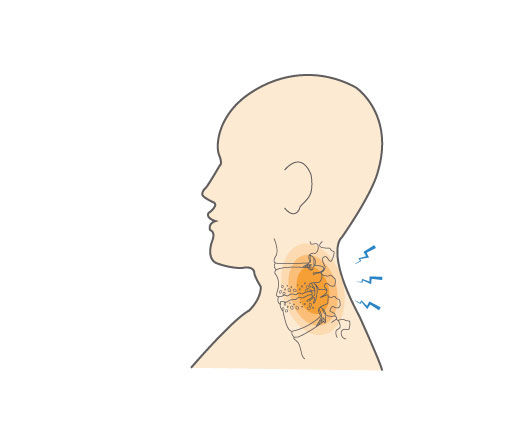Degenerative disc disease of the cervical spine is a condition caused by age-related neck disc wear and tear of one or more discs of the spine, and typically characterized by chronic neck pain. These spinal discs are found between each vertebra (the bones that make up the spine). They help hold the vertebrae together and provide protection during movements that can place stress on the spine, like running and lifting.
Cervical spine degeneration is a normal part of aging and isn’t usually associated with pain. A diagnosis of degenerative disc disease in the neck means that the degeneration is causing pain and possibly other symptoms.
A diagnosis of degenerative disc disease may follow one or more different injuries to the spinal disc, including:
- Bulge
- Hernia
- Crack
- Thinning


